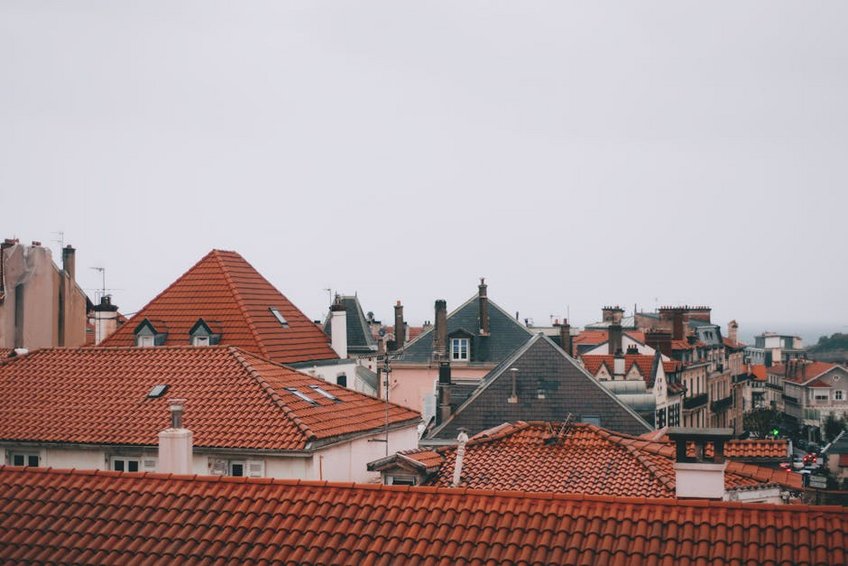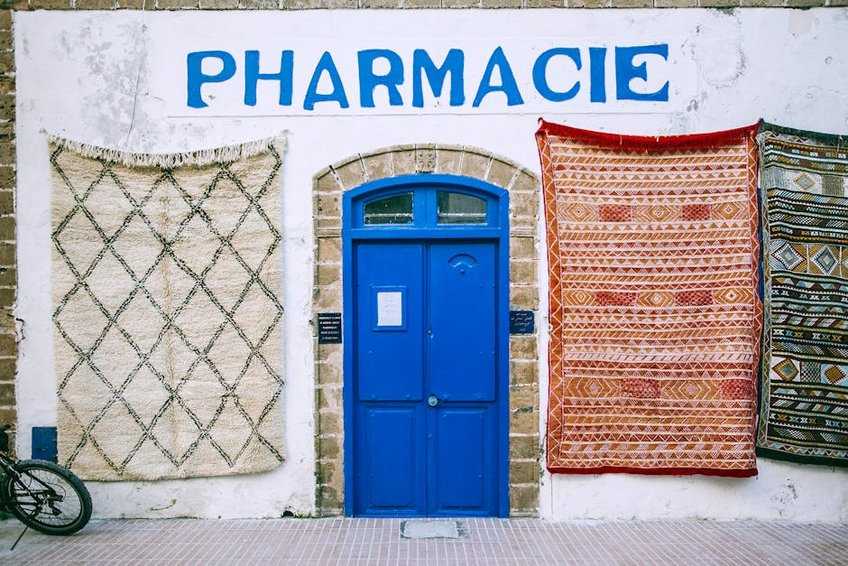Vilnius Old Town: Your Complete Guide to Lithuania’s Historic Heart
Exploring Vilnius Old Town feels like stepping into a beautifully preserved storybook where every cobblestone street whispers tales of grand dukes, Gothic architecture, and resilient spirit. This UNESCO World Heritage site, recognized as one of the largest medieval old towns in Northern Europe, captivates visitors with its Baroque churches, hidden courtyards, and vibrant cultural scene that seamlessly blends historical significance with modern energy. You’ll discover that Vilnius Old Town isn’t just a collection of old buildings—it’s a living, breathing neighborhood where locals sip coffee in shadowy courtyards, artists display their work along narrow lanes, and history resonates through every archway and spire. The moment you enter through the ancient Gate of Dawn, you understand why this magical district has captured hearts for centuries, offering an authentic European experience that feels both timeless and refreshingly undiscovered by mass tourism.
Vilnius Old Town Essential Information – What Every Traveler Should Know
Before you wander through Vilnius Old Town’s enchanting streets, understanding its historical context and layout will significantly enhance your experience. Founded by Grand Duke Gediminas in the 14th century, this remarkable district spans 359 hectares and contains nearly 1,500 historic buildings representing Gothic, Renaissance, Baroque, and Classical architectural styles. You’ll notice how the urban structure has remained largely unchanged since the Middle Ages, with narrow, winding streets opening suddenly into spacious squares where markets have operated for centuries. The town’s historical significance extends beyond architecture—it was here that the first book in Lithuanian was printed, and the region played crucial roles in both World Wars and the Soviet era, with many buildings bearing silent witness to these turbulent times. What makes Vilnius Old Town particularly special is how it functions as both a tourist destination and a living community, where university students, artists, and families continue the neighborhood’s centuries-old tradition of cultural and intellectual exchange.
Historical Significance and UNESCO Status
- Vilnius Old Town earned UNESCO World Heritage status in 1994 due to its exceptional medieval layout and architectural coherence spanning Gothic, Renaissance, Baroque, and Neoclassical periods
- The area contains significant Jewish heritage sites, including the former Great Synagogue location and numerous courtyards that once formed part of one of Europe’s most important Jewish communities
- Many buildings survived World War II relatively intact, making Vilnius Old Town one of the best-preserved historical centers in Eastern Europe despite Soviet-era challenges
- Budget travelers can find hostel dorm beds for $15-25 USD per night, enjoy inexpensive Lithuanian cuisine at self-service cafeterias for $5-8 USD per meal, and explore many free attractions including church visits and walking tours
- Mid-range visitors typically spend $80-120 USD daily for comfortable hotel rooms in historic buildings ($60-90 USD), restaurant meals with local beer ($15-25 USD), paid museum entries ($3-8 USD each), and occasional taxi rides
- Luxury experiences include boutique hotels in restored palaces ($120-200 USD nightly), fine dining at Michelin-recognized restaurants ($50-80 USD per person), private guided tours ($50-100 USD), and cultural performances ($25-40 USD)
- Official Vilnius Tourism Information
- UNESCO World Heritage Centre – Vilnius Historic Centre
Geographical Layout and Navigation Tips
Navigating Vilnius Old Town might initially feel confusing with its maze-like medieval streets, but you’ll quickly discover that the district organizes itself around several key squares and landmarks. The entire old town sits between the Neris River to the north and west and the Vilnia River to the south, with Cathedral Square and Gediminas Tower serving as the historical and geographical center point. From this central area, three main streets radiate outward: Pilies Street (Castle Street) leading northeast toward the Gate of Dawn, Didžioji Street (Main Street) running east to Town Hall Square, and Vokiečių Street (German Street) heading southeast into the merchant quarter. You’ll find that getting intentionally lost in the smaller side streets often leads to the most delightful discoveries—hidden courtyards, artisan workshops, and cozy cafes that don’t appear on standard tourist maps.

Vilnius Old Town Planning Your Trip – Seasons, Budget, and Preparation
Planning your Vilnius Old Town visit requires consideration of seasonal variations, budget allocation, and necessary preparations to make the most of your Lithuanian adventure. The temperate continental climate means you’ll experience distinct seasons—blooming springs perfect for courtyard cafes, warm summers filled with outdoor festivals, golden autumns ideal for photography, and snowy winters that transform the old town into a fairy-tale landscape. You should allocate at least 2-3 full days to properly explore the old town’s main attractions while still having time for spontaneous discoveries, though many visitors find themselves extending their stay once they experience the district’s charming atmosphere. Budget-wise, Vilnius remains one of Europe’s more affordable capital cities, with mid-range travelers spending approximately $80-120 USD per day including accommodation, meals, attractions, and local transportation, while budget-conscious travelers can manage on $50-70 USD daily without sacrificing experience quality.
Best Time to Visit Vilnius Old Town
Choosing when to visit Vilnius Old Town depends largely on your weather preferences and crowd tolerance. Late spring (May-June) offers ideal conditions with comfortable temperatures around 15-20°C (59-68°F), longer daylight hours, and blooming flowers throughout the old town’s many courtyards and gardens. Summer (July-August) brings warmer weather perfect for outdoor dining and festivals but also larger tourist crowds, while early autumn (September) provides a magical atmosphere with changing leaves and cultural events without the summer congestion. Winter visitors between December and February will experience a truly magical Vilnius Old Town covered in snow, with Christmas markets operating through January and fewer tourists, though you’ll need to pack appropriately for temperatures that frequently drop below freezing. Regardless of season, you’ll find the old town’s indoor attractions—museums, churches, and restaurants—provide comfortable experiences year-round.
Budget Planning and Costs for Vilnius Old Town
Essential Preparation Checklist
Preparing for your Vilnius Old Town adventure involves both practical considerations and cultural awareness to ensure a smooth experience. EU and US passport holders can enter Lithuania visa-free for up to 90 days, though you should ensure your passport has at least six months validity remaining from your planned departure date. While Lithuania uses the Euro, you’ll find credit cards widely accepted throughout the old town, though carrying some cash remains wise for smaller establishments and market vendors. Comfortable walking shoes become non-negotiable since cobblestone streets and uneven surfaces make heels impractical, while layering clothing prepares you for variable weather conditions even during summer months. Downloading offline maps or a Vilnius Old Town navigation app will help you navigate the medieval street network, and learning a few basic Lithuanian phrases like “ačiū” (thank you) and “labas” (hello) will be appreciated by locals.
Vilnius Old Town Top Attractions and Activities – Must-See Sights and Hidden Gems
Discovering Vilnius Old Town’s treasures involves balancing iconic landmarks with off-the-beaten-path experiences that reveal the district’s true character. You’ll want to begin at Cathedral Square, where the neoclassical Vilnius Cathedral and free-standing bell tower create an impressive introduction to the city’s history, before ascending Gediminas Hill for panoramic views that help orient you to the old town’s layout. From this central point, exploring the main thoroughfares like Pilies Street reveals charming boutiques, amber jewelry shops, and traditional pastry vendors, while venturing into narrower side streets leads to hidden courtyards where you might stumble upon artisan workshops or quiet cafes favored by locals. The old town’s religious diversity manifests through its stunning churches—from the ornate Baroque splendor of St. Peter and St. Paul’s Church to the historically significant Gate of Dawn chapel—while its cultural institutions like the National Museum of Lithuania provide deeper historical context for what you’re experiencing outdoors.
Must-See Highlights in Vilnius Old Town
Your Vilnius Old Town itinerary should include several unmissable landmarks that define the district’s historical and cultural significance. Gediminas Tower, the remaining portion of the Upper Castle, offers not only the best panoramic views of the old town but also houses a museum detailing Vilnius’s development from its 14th-century origins. The Gate of Dawn, one of the original city gates, contains a revered chapel with a miraculous icon of the Virgin Mary that attracts pilgrims from across Europe—even if you’re not religious, the artistic and historical significance makes this worth visiting. St. Anne’s Church represents a Gothic architectural masterpiece that reportedly impressed Napoleon so much he wanted to take it back to Paris, while the nearby Bernardine Church complex demonstrates how different architectural styles harmoniously coexist. The Presidential Palace, though not always open to visitors, presents magnificent Classical architecture and occasionally features changing of the guard ceremonies that add ceremonial grandeur to your exploration.
Hidden Gems and Local Favorites
Beyond the main tourist trail, Vilnius Old Town conceals numerous lesser-known spots that offer authentic local experiences and unique perspectives. Literatų Street, a narrow lane dedicated to writers and artists, features hundreds of small artworks, plaques, and installations celebrating Lithuanian literary figures—it’s perfect for quiet contemplation away from busier streets. The courtyards between Stiklių, Gaono, and Žydų streets preserve the atmosphere of the old Jewish quarter, with some containing memorials to the community that once thrived here before the Holocaust. For a truly local experience, visit the traditional Halės Market just beyond the old town’s official boundaries, where vendors sell everything from seasonal produce to homemade cheeses and traditional crafts. The Republic of Užupis, a self-declared independent artistic district within the old town, offers bohemian atmosphere, quirky art installations, and its own constitution displayed in multiple languages—a testament to Vilnius’s creative spirit.
Vilnius Old Town Practical Travel Information – Transportation, Accommodation, and Navigation
Navigating Vilnius Old Town practically requires understanding transportation options, accommodation choices, and how to move efficiently through the pedestrian-focused district. The entire old town functions primarily as a pedestrian zone, with limited vehicle access designed to preserve the historical environment and enhance visitor experience—this means you’ll do most of your exploration on foot, though the compact nature makes this enjoyable rather than exhausting. For reaching the old town from Vilnius Airport (VNO), which lies approximately 6 kilometers southwest, you can take taxi services for around $15-20 USD or use public bus routes 1 and 2, which stop near the old town’s edge and cost less than $1 USD. Once you’re situated within the district, you’ll find that everything worth seeing lies within comfortable walking distance, though the hilly terrain and cobblestone streets require appropriate footwear and occasional rest stops at the many cafes and benches scattered throughout.
| Accommodation Type | Location Advantages | Price Range (USD per night) |
|---|---|---|
| Historic Center Hotels | Walking distance to all attractions, authentic atmosphere, architectural charm | $80-150 |
| Boutique Guesthouses | Personalized service, unique character, often in restored buildings | $60-120 |
| Apartments & Vacation Rentals | More space, kitchen facilities, local neighborhood experience | $50-100 |
| Hostels | Budget-friendly, social atmosphere, central locations | $15-30 |


